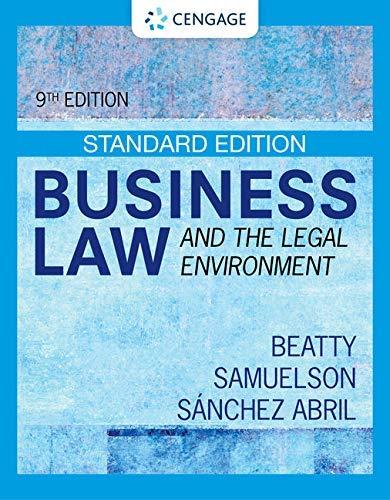Answered step by step
Verified Expert Solution
Question
1 Approved Answer
Stefan is proving to be an excellent paralegal, but Juanita Collins wants to make sure that Stefan understands the rules of evidence before she has
Stefan is proving to be an excellent paralegal, but Juanita Collins wants to make sure that Stefan understands the rules of evidence before she has him summarize the results of his investigation into the condition of a client's vehicle before and after an accident. She asks Stefan to articulate the difference between direct and circumstantial evidence. How should he respond? a. Direct evidence is evidence that is directly related to the legal issues. Circumstantial evidence is evidence that relates only to secondary legal issues. b. Direct evidence is any evidence that establishes the truth of the fact in question. Circumstantial evidence is indirect evidence that does not establish the fact in question but only the degree of likelihood of the fact. c. Direct evidence is evidence that can be authenticated. Circumstantial evidence is evidence that has not yet been authenticated, so it is not allowed into court. d. Direct evidence is any evidence that has come into direct contact with the defendant. Circumstantial evidence is evidence that is found in the outer areas of where the alleged event took place
Step by Step Solution
There are 3 Steps involved in it
Step: 1

Get Instant Access to Expert-Tailored Solutions
See step-by-step solutions with expert insights and AI powered tools for academic success
Step: 2

Step: 3

Ace Your Homework with AI
Get the answers you need in no time with our AI-driven, step-by-step assistance
Get Started


